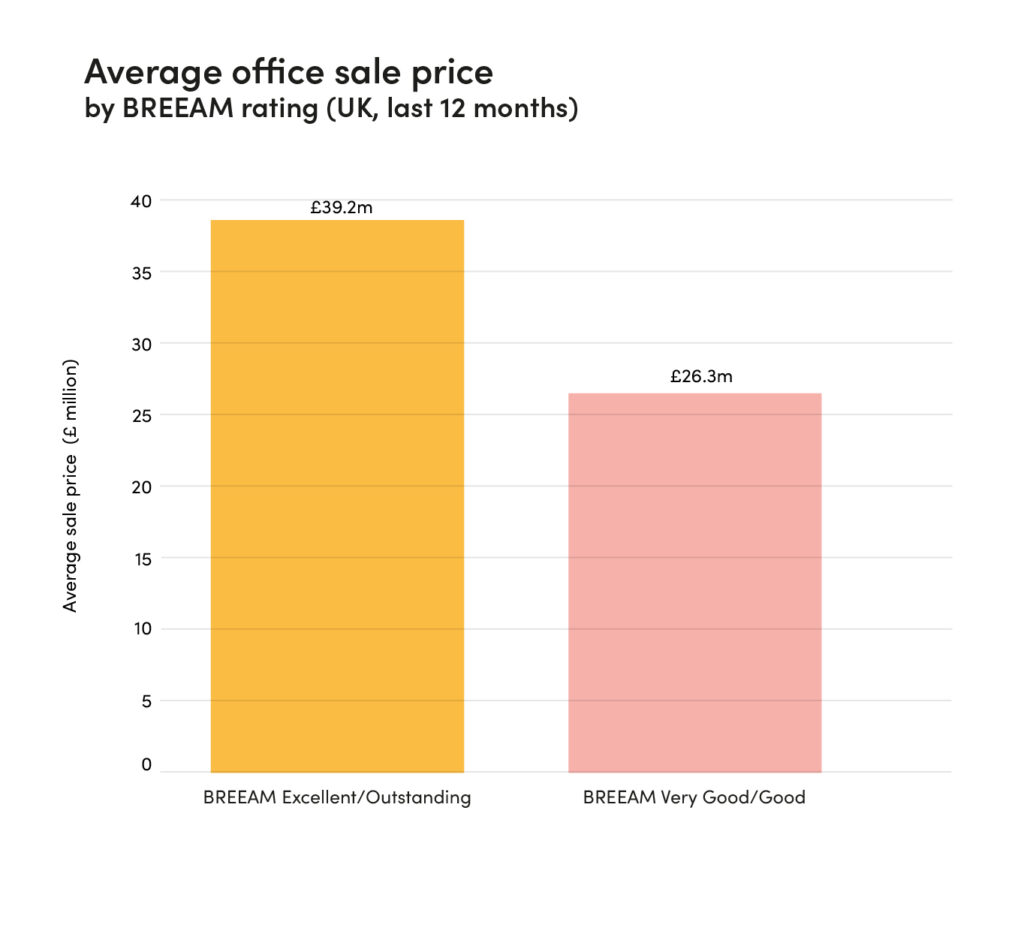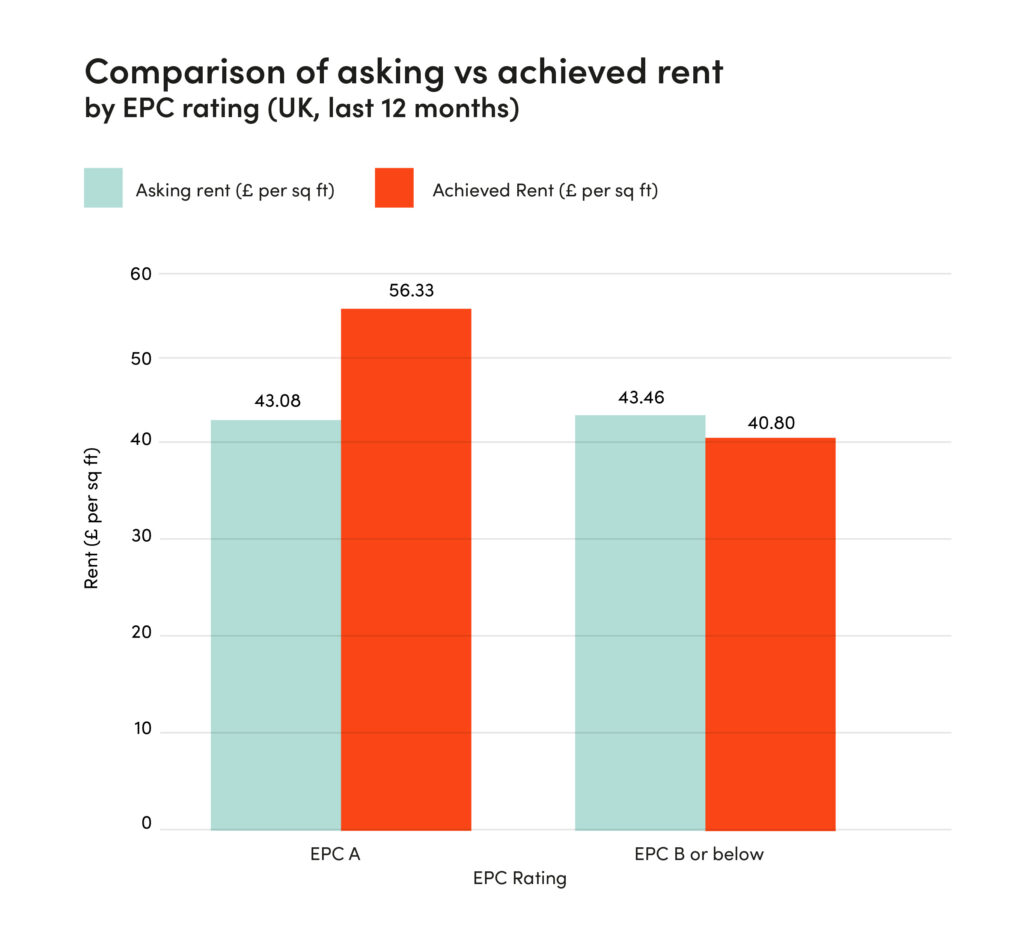The commercial office sector is at a crossroads. With a looming 70% undersupply of low-carbon, grade A office space by 2030 and increasing pressure from net-zero regulations, landlords and asset managers face a crucial decision: invest in sustainable refurbishments or risk losing tenants.
JLL’s recent Gen Z insights highlight a significant shift in occupier expectations:
- 71% of Gen Z and Millennials prioritise environmental impact when making decisions.
- 74% of EMEA-based organisations are willing to pay a premium for office spaces with strong sustainability credentials.
- Many existing buildings fall short in areas crucial to staff productivity, including thermal comfort, acoustics, and flexible workspace design.
The changing landscape brings both challenges and opportunities. Companies that ignore sustainability may lose investors and tenants, while those embracing it attract forward thinking occupiers and long-term backers.
Gen Z and Millennials increasingly prioritise sustainability, influencing market trends. As Gen Z enters the workforce, demand grows for green offices that align with their values.
The graph below shows that offices rated BREEAM Excellent or Outstanding sold for an average of £39.2m (£499/sq ft), compared to £26.3m (£435/sq ft) for those rated Very Good or Good. Higher-rated buildings also spent less time on the market, proving demand for strong environmental credentials.

Office leasing trends supports this. Offices with EPC B failed to meet asking rents (£43.46/sq ft asked vs £40.80/sq ft achieved), while EPC A properties exceeded expectations (£43.08/sq ft asked vs £56.33/sq ft achieved) as shown on the graph below.

Knight Frank also found retrofitted London offices rated EPC A had lease lengths over a year longer than EPC B, and two years longer than EPC C, highlighting long term appeal.
Expectations from Tenants and Investors for Office Spaces
Younger generations are driving demand for sustainable, high-quality work environments. Failure to meet these expectations risk a struggle to attract and retain talent.
Key trends shaping tenant demand:
- Wellbeing – Employees expect clean air, natural light, and spaces that support mental and physical health.
- Energy and carbon count – Occupiers favour efficient, low carbon buildings, often preferring refurbishments over new builds.
- Flexibility – Hybrid work demands adaptable layouts and smarter energy use.
Perspectives from young professionals at Hollis
- Poppy Payne, Events Assistant
- “Putting wellbeing and sustainability first shows that companies really care about their employees’ happiness and future. For me, it’s all about having a space where I feel valued, motivated and can give my best while maintaining a healthy work-life balance.”
- Amy Boms, Project Manager
- “For me, a workplace should reflect the values of its people. For my generation, sustainability is an expectation. Companies that prioritise eco-friendly design, renewable energy, and responsible waste management create environments where I feel aligned with a greater purpose.”
- Ben Wheeler, Building Surveyor
- “Sustainability is key to productivity and environmental morale. We consider the environmental impact of actions like commuting and building use. We also expect workplaces to offer amenities like gyms, cycle facilities, and breakout spaces. When choosing an employer, sustainability is a top priority.”
- Amani Keynan, Senior Communications Executive
- “I prefer to work for businesses that prioritise wellbeing and offer policies supporting a healthy, accommodating environment. A focus on workplace wellbeing fosters a trusting, thriving atmosphere both professionally and personally.”
How Hollis Supports Sustainable Office Upgrades
At Hollis, we offer a fully rounded approach to office sustainability, providing landlords and asset managers with cost-effective solutions that align with ESG goals. This is evident in our recent project located in 101 Embankment, Manchester, where we reached ActiveScore Gold, and an EPC rating of A for our client.
Key Strategies for Sustainable Office Spaces
Optimised Building Management Systems (BMS)
Upgraded BMS track real-time energy performance, optimising energy use and reducing costs. Service charge models allow landlords to recover costs while lowering tenant energy expenses, making sustainability financially viable.
Planned Preventative Maintenance (PPM) & Facilities Management (FM)
Smart maintenance extends asset life and enhances efficiency by addressing issues early. Incentivised FM teams ensure buildings meet sustainability standards, reducing the carbon footprint of maintenance operations.
End-of-Journey (EndoJ) Facilities
Encouraging active travel, such as cycling and walking, reduces workplace emissions. Certified Activescore and Modescore facilities support sustainable commuting, boosting both employee wellbeing and productivity.
Energy Efficiency Enhancements
Everyone wants to de-gas their assets. But don’t forget about the building fabric. If you have a leaky building the benefits of an all-electric system will go out the window – literally!
Health & Wellbeing Features
Fitwel certification, improved air quality, and biophilic design enhance employee wellbeing. Additional features like art installations, better stair access, and water stations foster a more engaging office space.
Vacancy Management & Transitional Refurbishments
Sustainability upgrades can be implemented during occupancy, reducing void periods and maximising asset value. Phased refurbishments improve environmental performance without disrupting tenants or returns.
A call to action for Landlords & Asset Managers
The shift towards sustainable, wellbeing focused office spaces is already happening, and those who fail to adapt will struggle to attract top caliber tenants.
At Hollis, we specialise in futureproofing commercial properties through strategic refurbishments, ensuring landlords remain competitive in a rapidly changing market.
Want to ensure your next project meets the next generation’s demands? Get in touch.













